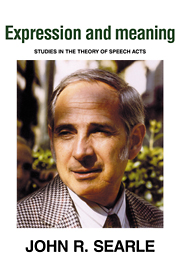6 - Referential and attributive
Published online by Cambridge University Press: 05 June 2012
Summary
Is there a distinction between referential and attributive uses of definite descriptions? I think most philosophers who approach Donnellan's distinction (Donnellan, 1966 and 1968) from the point of view of the theory of speech acts, those who see reference as a type of speech act, would say that there is no such distinction and that the cases he presents can be accounted for as instances of the general distinction between speaker meaning and sentence meaning: both alleged uses are referential in the sense that they are cases of referring to objects, the only difference is in the degree to which the speaker makes his intentions fully explicit in his utterance. Such objections are in fact quite commonly made, both in the literature and in the oral tradition, but I have never seen a version of the objection I was fully satisfied with and the main aim of this chapter is to attempt to provide one.
DONNELLAN'S ACCOUNT OF THE DISTINCTION
Donnellan presents the distinction by means of certain examples, which we are supposed to be able to generalize. Suppose we come across the battered body of Smith, murdered by someone unknown to us. We might say, “Smith's murderer is insane”, meaning by “Smith's murderer” not any particular person but, rather, whoever it was that murdered Smith. This is the attributive use.
- Type
- Chapter
- Information
- Expression and MeaningStudies in the Theory of Speech Acts, pp. 137 - 161Publisher: Cambridge University PressPrint publication year: 1979
- 6
- Cited by



